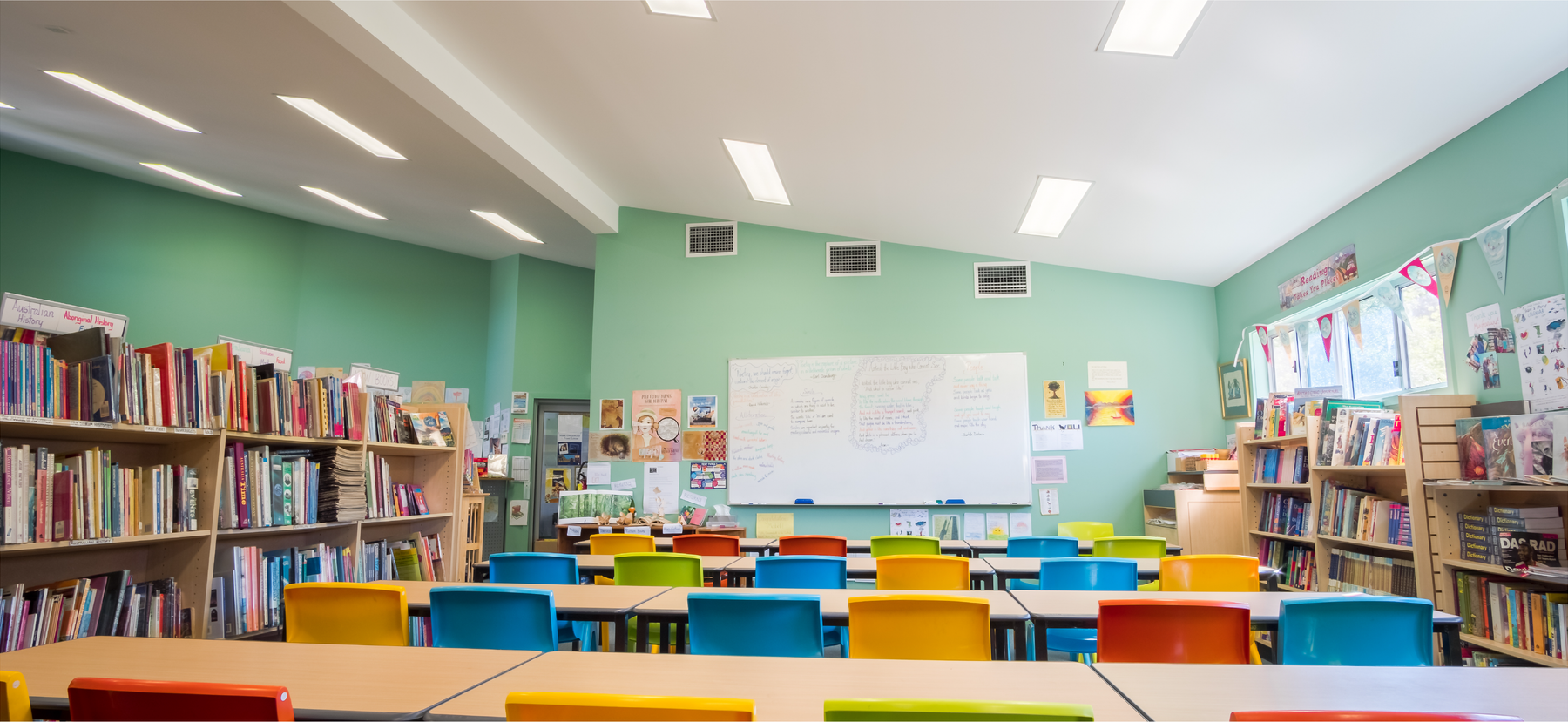
School Cleaning Procedures: Maintaining a Healthy Environment
School environments are healthiest when kept clean and well maintained. Consistent, every day cleaning processes ensure a safer, healthier facility. Having a solid maintenance plan in place that includes procedures for cleaning all parts of the school is important. Below are tips on the main areas to focus on.
Clean. Disinfect. Sanitize.
By cleaning a surface, you are removing dirt and other physical impurities. A disinfectant will be required to kill any germs living on surfaces or objects, an essential step to reducing the spread of disease at the facility. Daily cleaning should include the sanitization of commonly touched objects and surfaces such as desks, doorknobs, keyboards, tables, etc. The flu virus can actually live on a surface for up to 24 hours. Routine cleaning, especially during flu season, will greatly reduce the virus from spreading. As always, follow label directions on all cleaning chemicals and pay attention to any hazard warnings.
Pro tip: Using a color coded cleaning system is good practice and helps prevent the spread of infection and cross contamination.
Deep Cleaning
While routine cleaning when school is in session is important to maintain a healthy learning environment for students and staff, deep cleaning during extended breaks is just as important. Deep cleaning not only helps to improve health and safety, it also reduces the cost and need for repairs and replacements.
Target areas include:
- Restrooms, gyms, and locker rooms – Floor to ceiling sanitization ensures that all surfaces are disinfected and clean. Cleaning and repairing tile and grout also can improve the slip resistance of the flooring.
- Carpets and floors – Clean, shiny floors are not only an important part of making a great impression, but will also last longer when kept well-maintained. Dirt and pollutants can heavily build up in carpets and have been shown to irritate asthma and allergy sufferers. Deep cleaning of carpets should include extraction and sanitization, while hard floors should be stripped and waxed.
- Foodservice areas – Cafeteria areas need to be routinely cleaned as they include a lot of high touch objects and surfaces. A deep cleaning of the floors and equipment that food is prepped in is also necessary.
- Windows – Windows should be washed inside and out for maintenance and to ensure they are effectively bringing in the most daylight possible.
- HVAC units – To keep HVAC systems running properly, preventative maintenance is key. Washing down vents to allow max air circulation, cleaning coils, and changing air filters improves air quality and kills bacteria buildup.
A clean place is a safe place. Always keep in mind that cleaning is not just about appearance; it’s about health and safety.
Learn more: If you are looking to start a new school cleaning program, The Environmental Protection Agency offers a detailed set of guidelines for setting up a School Environmental Health Program.

 Protect & Save with SuperFreak.
Protect & Save with SuperFreak.



